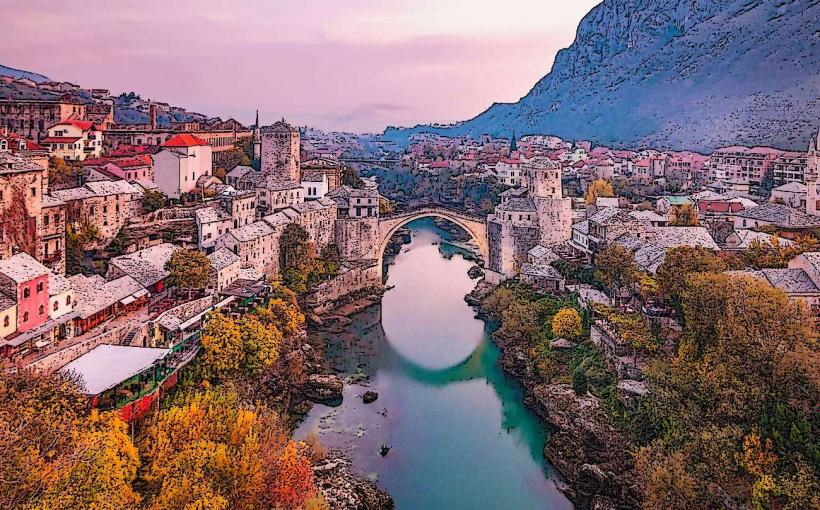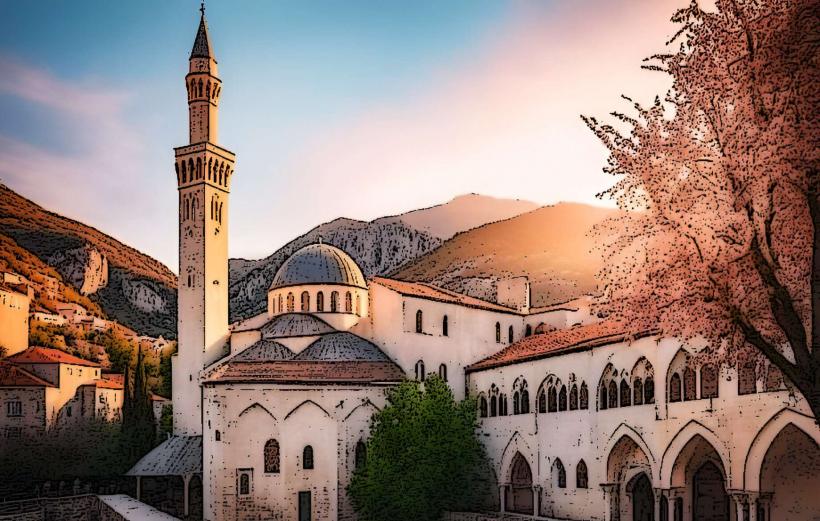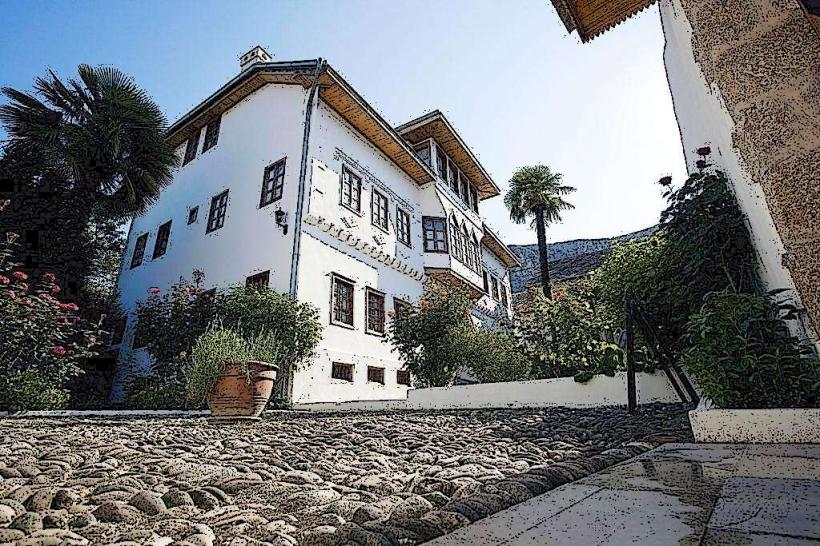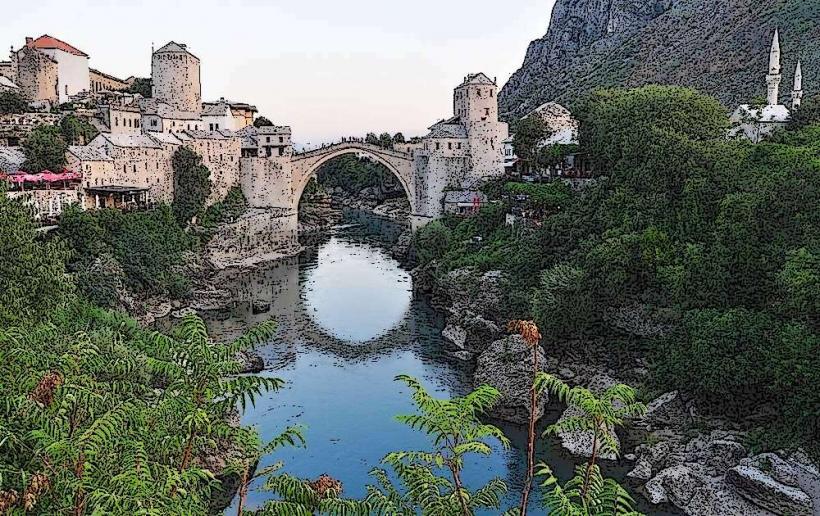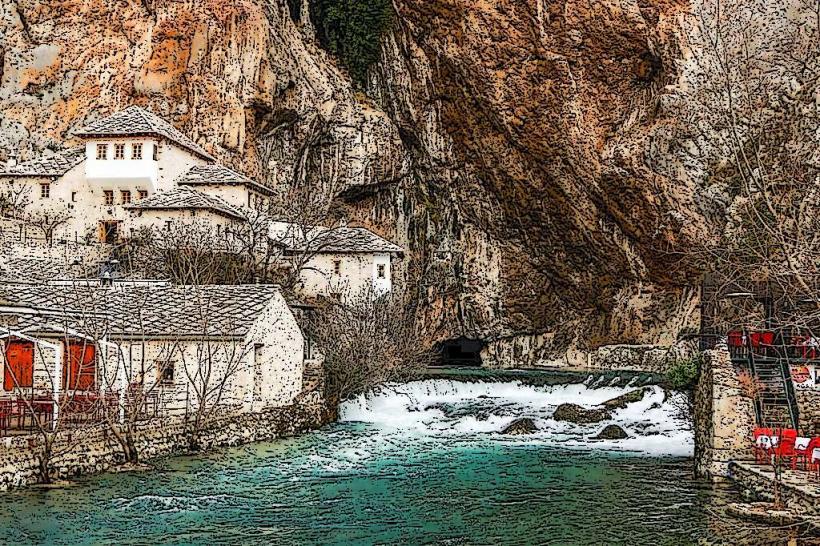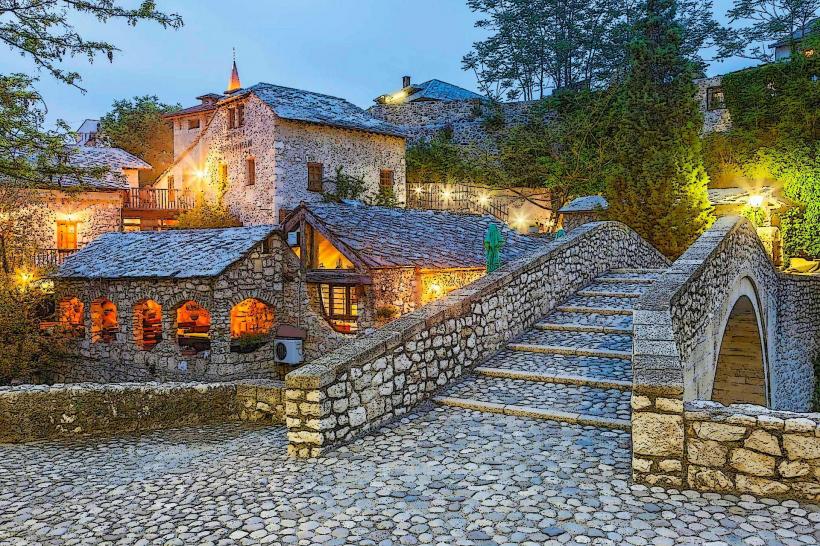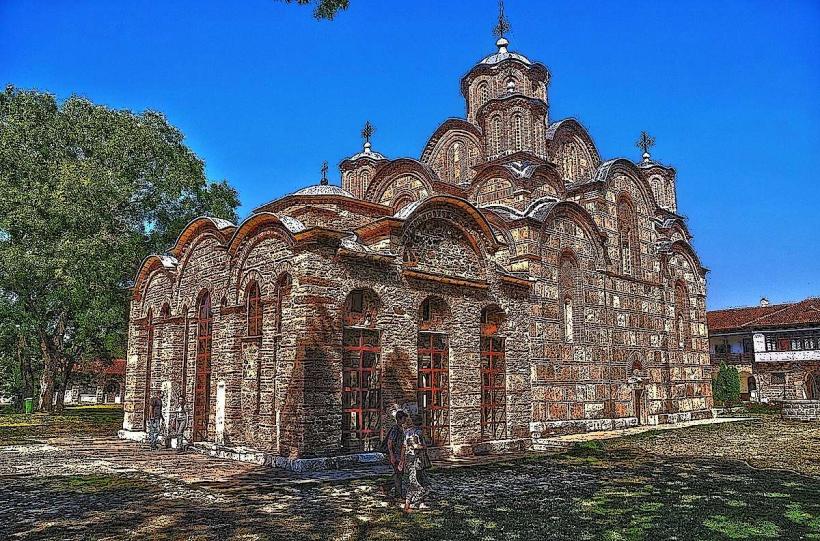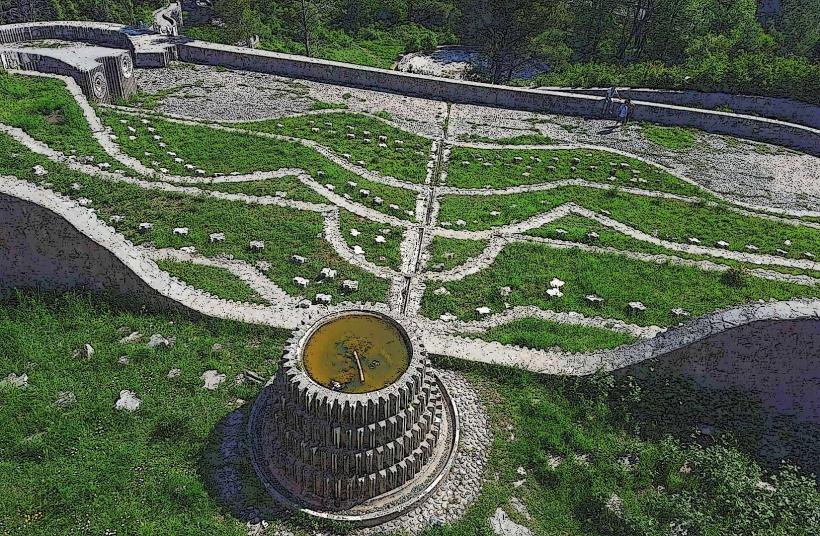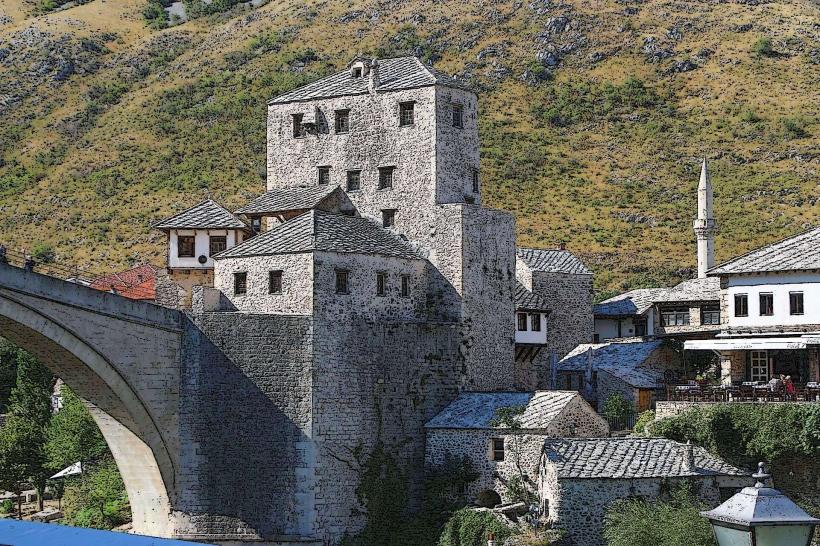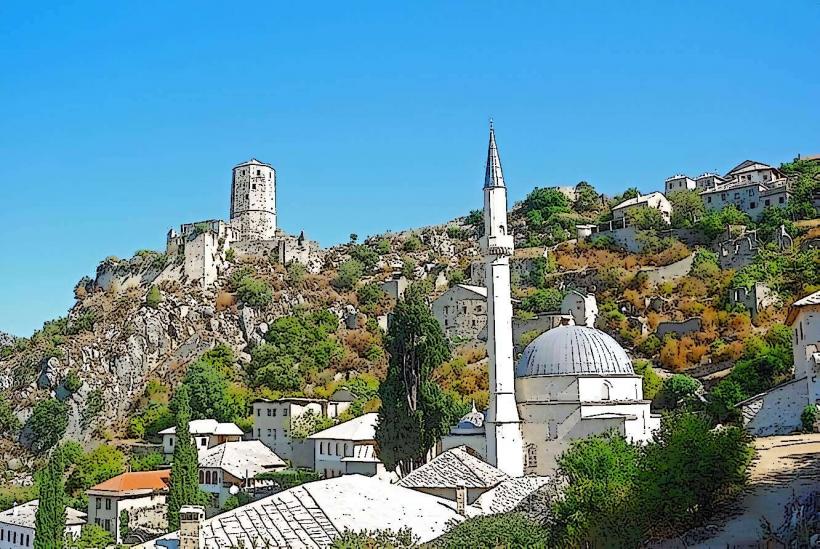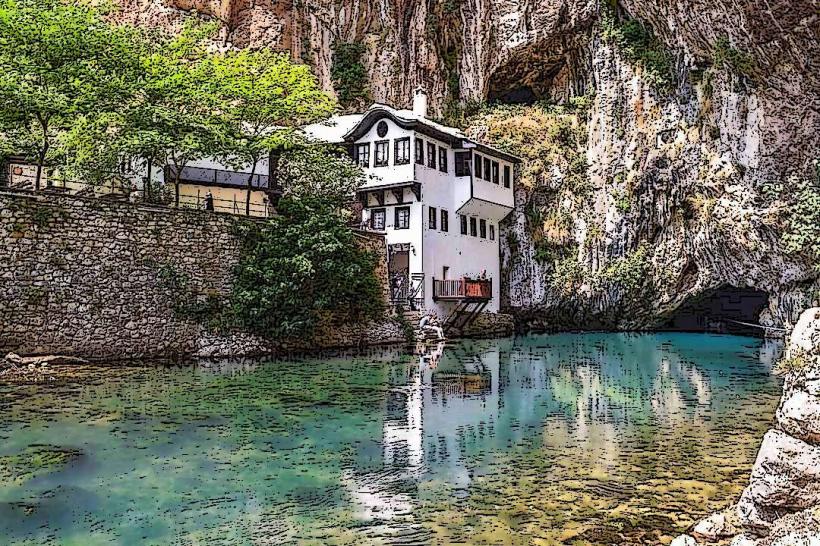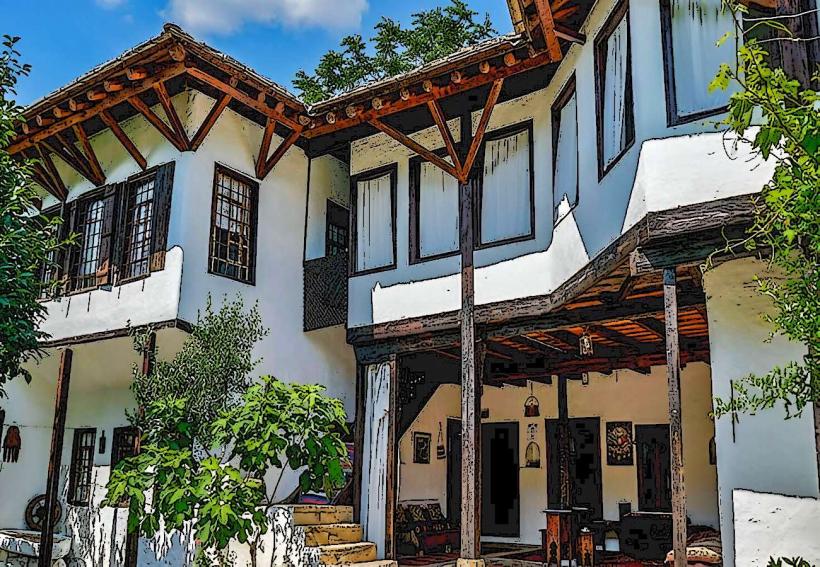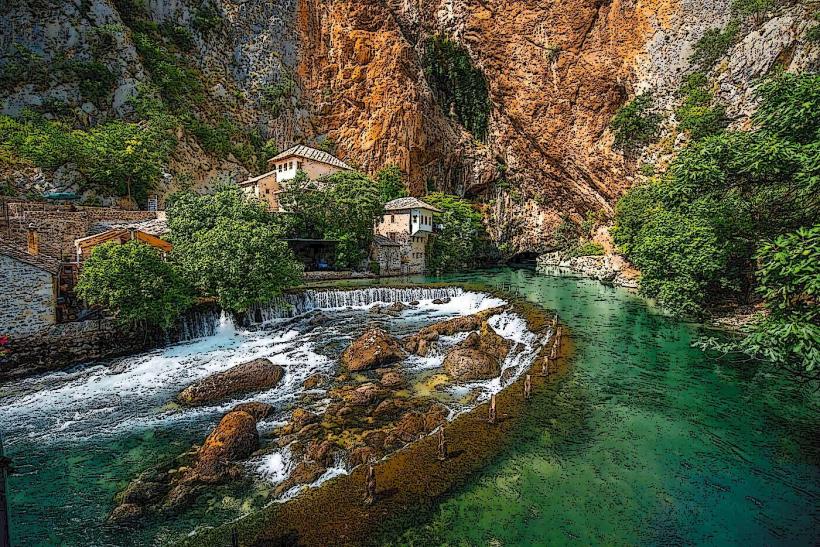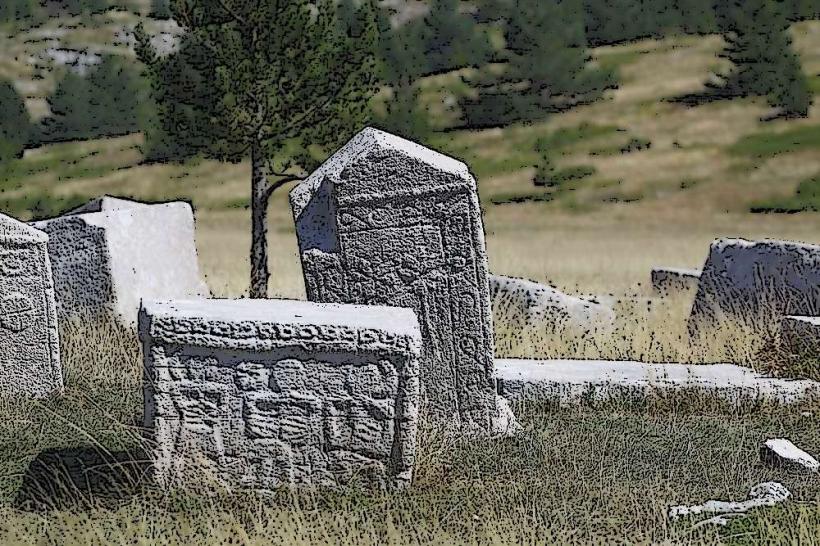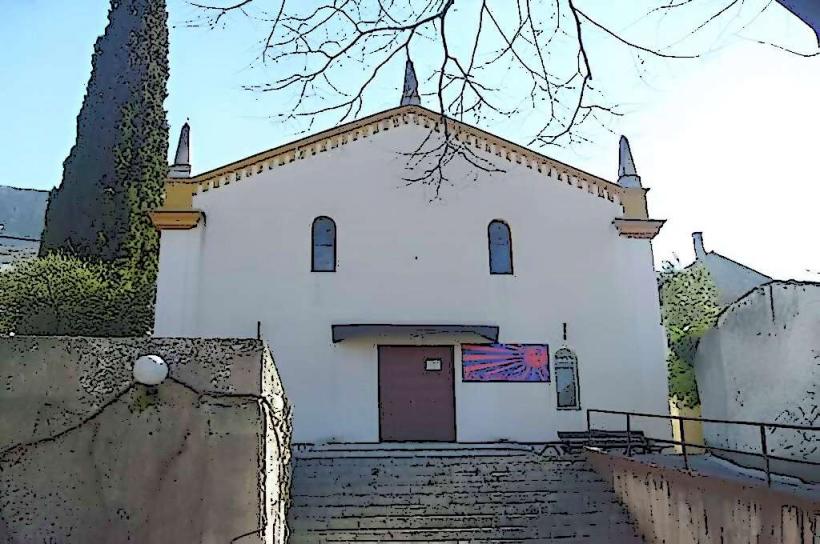Information
Landmark: Mostar Old BazaarCity: Mostar
Country: Bosnia and Herzegovina
Continent: Europe
The Old Bazaar in Mostar, locally known as Kujundžiluk, is one of the most captivating and historically rich areas in the city of Mostar, Bosnia and Herzegovina. Located near the iconic Stari Most (Old Bridge), this enchanting marketplace offers visitors a chance to step back in time and experience the vibrant culture, traditions, and craftsmanship of the region.
Key Features of Mostar Old Bazaar (Kujundžiluk)
1. Historical Significance
- The Old Bazaar dates back to the 16th century, during the Ottoman period, when it served as the city's commercial and cultural hub.
- Merchants and artisans gathered here to trade goods, create crafts, and socialize, establishing Kujundžiluk as a bustling marketplace that reflected the multicultural essence of Mostar.
2. Traditional Architecture
- The bazaar features cobblestone streets, small stone buildings, and traditional Ottoman-style shops with wooden shutters and awnings.
- The area is a visual delight, with its preserved historical charm blending harmoniously with the surrounding landmarks, including the Neretva River and the Old Bridge.
3. Artisanal Shops and Handicrafts
- The Old Bazaar is famous for its artisan workshops and souvenir shops that sell:
- Copper and brassware, such as engraved plates, coffee sets, and jewelry.
- Handwoven textiles, including rugs, scarves, and tablecloths.
- Traditional Bosnian ceramics, featuring intricate designs and bright colors.
- Local artwork and paintings, often depicting the Old Bridge and the picturesque cityscape.
4. Authentic Shopping Experience
- Visitors can observe artisans at work, creating goods using traditional techniques passed down through generations.
- Bargaining is a common and welcomed practice, making the shopping experience lively and engaging.
5. Local Cuisine and Cafés
- The bazaar is dotted with cafés, restaurants, and street food vendors, offering a taste of authentic Bosnian and Herzegovinian cuisine. Popular options include:
- Bosnian coffee served in a traditional džezva (coffee pot).
- Sweet treats like baklava and tufahija (stuffed apples).
- Grilled dishes such as ćevapi (grilled meat sausages) and sogan-dolma (stuffed onions).
- Many of these establishments offer outdoor seating with stunning views of the Old Bridge and the Neretva River.
6. Cultural Fusion
- Kujundžiluk embodies the meeting of East and West, showcasing the cultural influences of the Ottoman, Austro-Hungarian, and local Herzegovinian traditions.
- The bazaar’s atmosphere is lively and welcoming, with street performers and musicians often adding to the ambiance.
Exploring the Bazaar
Best Time to Visit
- The bazaar is busiest during the spring and summer months, when tourists flock to Mostar. Early mornings and late afternoons offer a quieter, more intimate experience.
Accessibility
- The narrow, cobbled streets of Kujundžiluk are best explored on foot. Wear comfortable shoes to navigate the uneven paths.
- It is located just a short walk from the Old Bridge, making it easy to include in a tour of Mostar’s historic landmarks.
Nearby Attractions
- The Old Bridge: The centerpiece of Mostar and a UNESCO World Heritage Site.
- The Koski Mehmed Pasha Mosque: Offering panoramic views of the city from its minaret.
- The Turkish House (Bišćević House): A preserved Ottoman-era home showcasing traditional furnishings and architecture.
Why Visit the Mostar Old Bazaar?
The Old Bazaar in Mostar is more than just a shopping destination—it is a living piece of history where the spirit of the Ottoman era still thrives. Whether you’re seeking unique souvenirs, immersing yourself in the vibrant culture, or simply enjoying the charm of its surroundings, Kujundžiluk is a must-visit spot that captures the essence of Mostar’s rich heritage.

